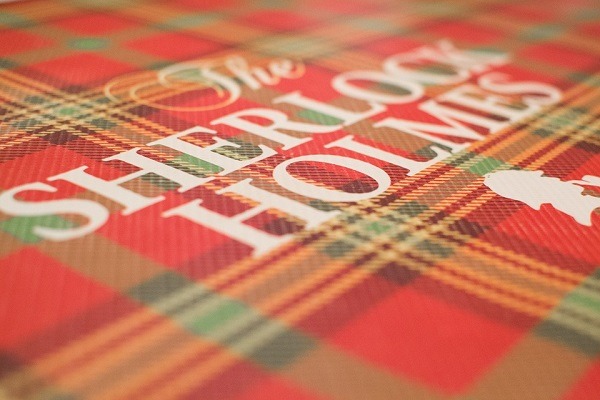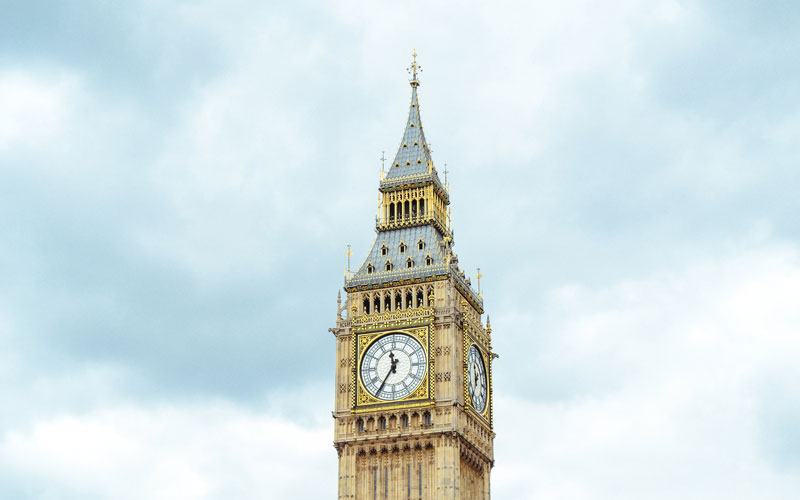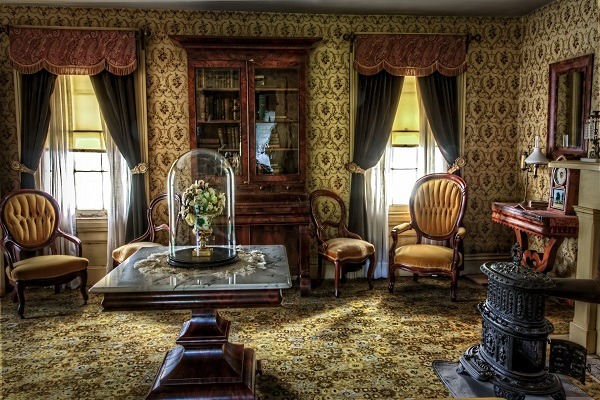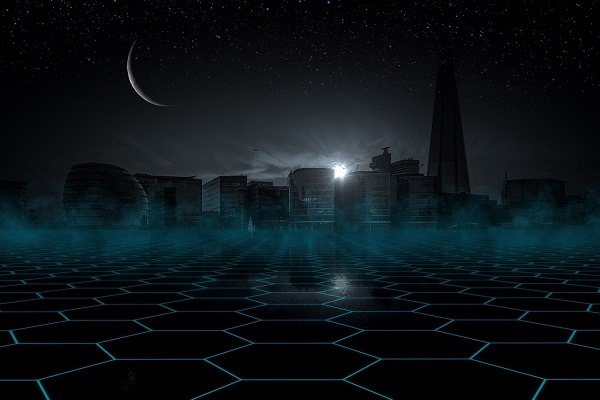Genre, as a literary category, is defined by the content, tone or technique within a text. Pinpointing the genre of your novel is an essential part of the writing and publishing process. It shapes everything from your writing process, as you develop plot and themes, to the way you pitch your novel to publishers and agents.

Whether you’re knee-deep in the novel writing process or about to dive in, here’s your crash course guide to genres. We’ve got a rundown of the most common genres there are out there, tips on how to identify them and navigate subgenres, along with the essentials for nailing your pitch.
Table Of Contents
Popular Genres and Their Subgenres
Crime and Detective
Crime fiction is a genre that fictionalises crime, criminals and the detection of crime.
From Sir Arthur Conan Doyle’s infamous Holmes and Watson duo, scouting the streets and countrysides of Victorian England for the perpetrators of ghastly crimes, to the modern sleuths cracking open cold cases to uncover the truths behind decades of lies, crime fiction undoubtedly presents an irresistible tale for the voracious reader.
In many ways, this genre wields a magnifying glass that ‘reveals the fingerprints of history’, by examining the underlying conflicts of motives, morals and human depravity.
Crime fiction satisfies in us a secret yearning for justice, the unappeasable appetite for a fair world, which begins in childhood and never leaves us. It satisfies our need for conclusions, both moral and narrative.” — Nick Elliot
Though the earliest known fictional works on crime date to the early 1800s, the genre became popular from the 1850s onwards. The emerging dominance of the genre is thanks to several factors of the era: the prominence of social justice issues, the rise of mass media publishing and the paperback, and the class conflicts and associated working class life.
Turbulent times provided a backdrop for many of the greats of crime fiction: Conan Doyle and Christie, just to name a few.
As one of the most popular and lucrative genres in the publishing industry, the genre of crime fiction is an umbrella for a broad array of subgenres. So many variations of the genre are available on your bookshelf that the conventions of the classic whodunit often no longer apply. However, the fictional works often follow the pattern of:
- A crime is committed
- An investigation follows
- A resolution is reached, with some measure of justice restored
Often the resolution reached involves the capture and punishment of the criminal at fault; however, it doesn’t always involve complete justice. Despite the tangled array of loose ends that may leave readers wondering at the state of human morality, there is always something that keeps readers glued to the page.
Andrew Taylor summarises the widespread appeal of crime fiction best when he says:
The best crime novels do both more and less than this: they do not suggest a remedy for crime or reassure us that all in the end will be well; but they can help us to understand our violent society, and they also allow us to hope that evil will not go unpunished.” — Andrew Taylor

What are the most common crime and detective subgenres?
The hardboiled detective
The hardboiled detective is one of the most common characters people associate with crime fiction. This subgenre involves the stereotypical protagonist who is often intelligent, prefers to operate alone, and upholds specific morals, despite personal flaws.
This lone sleuth prowls the streets on the hunt for evidence that could lead them to the perpetrator of the crime. The most common crime is murder.
The whodunit
The whodunit (or whodunnit) is a variation on the detective subgenre, featuring a plot-driven focus. Various ‘red herrings’ and clues are provided to throw readers off the scent of who the actual culprit is.
The cosy mystery
The cosy mystery involves fiction in which the more gruesome and violent aspects of crime are downplayed, often in a humorous way, and the events of the narrative occur in a small, close-knit community.
Quite often the featured detective is an outsider and an amateur attempting to solve the crime, with the help of contacts within the police force.
The police procedural
Police procedurals are an ever-popular subgenre in print and onscreen. This fiction focuses on the meticulous and everyday procedures of police officers who investigate crimes.
The real-life aspects of these narratives offer a tantalising glimpse into the realities of investigations, justice and the police force.
Is crime the right genre for me?
If you’re still figuring out whether crime fiction is your genre of choice, ask yourself these questions:
- Is a crime and the investigation of a crime the central driving force of my narrative?
- Does my narrative have an overarching moral?

Fantasy
Fantasy is a genre, within the genre of speculative fiction, that uses supernatural elements in the main plot and/or setting of the narrative. From Middle-earth to Hogwarts to the faraway lands of fairytales, the best of fantasy fiction features incredible sagas and dangerous voyages into the unknown.
Discovering new worlds is part of the joy for avid readers of fantasy, and there’s no greater reason than that of returning again and again to places yet explored.
Fantasy should interest us because it enacts in some fundamental way the dream of all fiction: the creation of a new and singular world in the telling of a story.” — John Mullan
The age-old mantra that realism is for the serious and fantasy for children couldn’t be any more false. Since fantasy worlds operate through metaphor, they are often the perfect, seemingly innocuous platform for exploring some of the most relevant contemporary issues.
Where realism is confrontational in its dissection of society, fantasy can use a sense of magic, humour and mystery to convey a tale relevant for many age groups.
Many tales could be classified as fantasy; even Shakespeare’s A Midsummer Night’s Dream echoes the magical and mystical in every telling. Yet it was only in the 20th century that the sword-wielding and sorcery of ‘high fantasy’ gained popularity with a wide audience.
Notable authors include C. S. Lewis, J. R. R. Tolkien and Ursula K. Le Guin. Around this time, the emergence of ‘lost world’ fantasies became a well-loved subgenre, featuring tales such as Peter Pan and The Wizard of Oz.
Like other genres, fantasy encompasses many subgenres, each of which feature myriad unique tropes and conventions. Common fantasy tropes include:
- The fight between good and evil – many fantasy sagas revolve around a central conflict that pits good against evil, hero against villain.
- The hero’s journey – Joseph Campbell’s hero’s journey is a story arc, frequently used within the fantasy genre, that follows the traditional three-act structure.
- The quest – many sagas incorporate a quest as the overarching plot. The climax of the tale involves the retrieval and use of the sought-after object or power.

What are the most common fantasy subgenres?
High fantasy
High fantasy involves tales that are set in other worlds, completely detached from Earth and constructed to provide an immersive experience for the reader. This subgenre is also referred to as epic fantasy, in the way the plot often focuses upon nation or worldwide stakes within the central conflict.
J. R. R. Tolkien’s Lord of the Rings is one of the most famous examples of the classic high fantasy epic saga.
Low fantasy/Urban fantasy
In contrast, low fantasy involves tales set on Earth or in otherwise plausible worlds. More often, low fantasy narratives are character-driven, featuring smaller stakes than high fantasy and incorporating fantasy elements in relatively realistic circumstances.
Fairy tales, folklore and mythology
Fantasy fiction often draws upon fairy tales, folklore and mythology as inspiration for the themes and plot. Cultural narratives of heroes, gods and voyages allow fantasy fiction to encapsulate the reader with familiar tales, while also echoing messages of contemporary significance.
Other common features of this subgenre include anthropomorphism, perilous journeys and a strong didactic purpose.
Is fantasy the right genre for me?
If you’re still figuring out whether fantasy is your genre of choice, ask yourself these questions:
- Are supernatural and magical elements an essential and driving force within the narrative?
- Is my setting ‘otherworldly’? If so, how does this shape the narrative?
Historical fiction
Historical fiction refers to any creative work that is set in the past and takes care to represent the past with the most possible accuracy. Everything from historical settings to famous people can become the fodder for incredible works of historical fiction, capable of capturing the imaginations of many.
The struggle for many writers of historical fiction is striking the balance between authenticity and historicity, with research being one of the most challenging components of the writing process.
The exact requirements for historical fiction are unclear, though the genre is sometimes defined as needing to be set least 25 years before the time of writing. Others have argued this figure to be at least 50 or 100 years.
The specific time frames are not as important as the true purpose of historical fiction, which is often to relate past eras with present realities.
Authors who write literary historicals center their tales not on the historical setting but on the plot, which may help us better understand the differences (or parallels) between then and now, and on characters who manage to transcend time and speak to us from their own perspective in a way that we, today, can understand.” — Sarah Johnson
While historical fiction rose to prominence in the late 19th century, within the Western literary tradition, this genre has been a staple of almost every culture. For millennia, humans have wondered what life was like before and have crafted tales to tell of those times gone by.
Historical fiction has proven a powerful genre, able to comment critically and even shape society.
For example, Victor Hugo’s The Hunchback of Notre Dame, a novel published in the early 19th century, yet set during the late Middle Ages, is credited for influencing the rising support to protect Gothic architecture in Paris and surrounding areas.
There are countless historical periods to write about, thus there are countless more subgenres for historical fiction writers to explore.

What are the most common subgenres of historical fiction?
Fictional biographies
Fictional biographies – that is, creative works grounded in factual evidence about historical persons – have proven ever popular over the decades and centuries.
From fictional memoirs about Alexander the Great to biographies of famous philosophers, famous peoples are some of the most interesting subjects for fiction writers.
Historical romance
Historical romance is a subgenre that features love stories set in history. Themes of love and romance are key aspects driving the narrative forward. Regency historical romances are a particularly popular strand of this subgenre.
Historical mysteries
Following the conventions of the ‘whodunit’ crime subgenre, historical mysteries are narratives that follow as protagonists investigate a central crime, such as murder.
The resolution of the story hinges on the discovery of the culprit and the relative restoration of peace and justice, though this isn’t always the case.
Nautical and pirate fiction
Nautical historical fiction is a sub genre that focuses on life at sea, the exploits of pirates and the frequent conflicts between pirates and the navy. Common themes of adventures and voyages are distinctive for this sub genre.
Is historical fiction the right genre for me?
If you’re still figuring out whether historical fiction is your genre of choice, ask yourself these questions:
- How far back in history is your story set?
- Does your story involve real historical events or figures?
- How important is the time period to the development of your narrative?
- Does your narrative incorporate elements of romance or mystery?

Romance
Romance is a genre that most often focuses on the relationship between two people, with the associated themes of love, romantic affection and passion, most often ending in a ‘happily ever after’.
While many stories may have romantic elements, not all stories with romance are classified as romantic fiction. Stories that qualify as romantic fiction are ones in which the developing romance is the central driving force to the narrative; without the romance, the rest of the story appears more complementary rather than a standalone plot.
From Austen’s beloved story of Elizabeth Bennett and Mr. Darcy, to the modern love interests crafted by American novelist Loretta Chase, love is in the air!
As the second most popular genre in the United States, romantic literature is a billion-dollar industry with countless subgenres and crossovers with other genres.
Most often romantic novels are shorter than other genres. The typical romantic novel will follow a story arc along the lines of:
- The heroine meets the hero
- A conflict threatens to keep the couple apart
- There’s a realisation that the couple’s love is worth the fight of overcoming the conflict
- Happily ever after – a resolution wherein the couple overcomes the conflict
There are countless possibilities of genre crossover for the romantic fiction writer.

What are the most common romance subgenres?
Contemporary romance
Contemporary romantic fiction can be classified as any narratives that focus on developing romantic relationships, set in any decade from the 1970s onwards.
The assumption is that contemporary tales will gravitate away from traditional gender roles that, for example, assume a woman will give up her job upon becoming married and subsequently a mother.
For example, most contemporary romantic novels feature an independent heroine, who sustains a career and personal interests, and who isn’t dependent on her love interest.
Historical romance
As discussed above, the crossover of historical fiction and romance is a popular collision of genres, producing a highly lucrative and competitive market.
This subgenre focuses on the romantic relationship between two people, in the context of a particular historical period.
Multicultural romance
Multicultural romances focus on the romantic relationship between two people of differing cultural and ethnic backgrounds.
Conflicts and plot points centre around the hurdles of the developing relationship along with the inherent intercultural turmoil that is sometimes evident.
Paranormal romance
Paranormal romance blends the conventions of romantic fiction with elements of speculative fiction. The central conflict, based upon a science fiction or fantasy premise, is accompanied by the development of a romantic relationship.
This might mean the characters themselves are vampires, shapeshifters or other forms of powerful beings, or that the setting provides a supernatural or fantastical backdrop for the central romance.
Fantasy romance differs from paranormal romance in its emphasis on worldbuilding and the importance of fantasy elements as a driving force in the narrative. Instead of blending contemporary settings, new worlds, governed by unfamiliar laws, are constructed.
Is romance the right genre for me?
If you’re still figuring out whether romance is your genre of choice, ask yourself these questions:
- How important is the developing romance to the plot and structure of my narrative?
- Does my narrative have a happy ending? (Not all romantic fiction has a ‘HEA’, but many do.)
- Does my novel treat themes of love, romance and commitment in positive lights? What message is my novel conveying about love?
Science Fiction
Science fiction is a genre within the domain of speculative fiction, dealing with imaginative concepts inspired by science and the potential ramifications of each.
Unlike fantasy fiction, which focuses on supernatural forces like magic, science fiction focuses on ideas such as time travel, space travel, alien life, parallel universes, and dystopian futures.
In many ways this genre is the literature of change, with science fiction often reflecting society’s thoughts towards certain new technologies and foretelling the direction of technological advancement.
It’s a genre that manages to sweep away its readers to imagine new possibilities and transform perceptions of the world:
… the science fiction story destroys our own comfortable society. The science fiction story does not deal with the restoration of order, but with change and, ideally, with continuing change … we leave our society and never return to it.” — Isaac Asimov
Echoes of the science fiction genre appear earlier than many of us would imagine, perhaps as early as some tales in Arabian Nights, though many argue Mary Shelley’s Frankenstein was the first defining work of science fiction.
With the transformative industrial revolution, the introduction of electricity and the development of the steam engine, human minds became enthralled with technology and its possibilities.
From the 19th century onwards, science fiction expanded to encompass many great works such as H. G. Wells’ War of the Worlds and Jules Verne’s Journey to the Centre of the Earth.
Today’s science fiction often revolves around issues of environmental destruction, space travel and the domination of artificial intelligence. Though topics have changed with technology, the spirit behind science fiction remains the same spirit of curiosity.
Ursula K. Le Guin wrote, ‘Science fiction is not prescriptive; it is descriptive.’ Science fiction looks at current technological and social trends and extrapolates them into the near or far future. It speculates on the consequences of these trends, both good and bad, if they continue unchecked.” — The Atlantic
Classifications of ‘hard’ and ‘soft’ science fiction are often helpful for understanding the broad diversity of fiction within this genre.
Hard science fiction refers to works that pay particular attention to accuracy regarding scientific concepts, such as laws of physics. In contrast, soft science fiction more often explores aspects of the social sciences, such as anthropology and psychology.
Many works cross over these two classifications, perhaps in ways that create more compelling narratives, so these guidelines are not hard and fast rules.

What are the most common sci-fi subgenres?
Time travel
Time travel fiction features the intentional or unintentional crossing of time periods by an individual or group of individuals. H. G. Wells’ The Time Machine and the popular movie franchise Back to the Future are two icons of this subgenre.
Military and war
Often science fiction deals with fictional situations of war and conflict, on Earth and across the galaxy.
Usually there’s a particular focus on the political aspects, logistics, dramas and tragedy of high-stakes conflicts, often with parallels to real life as a means of challenging and critiquing contemporary politics.
Apocalypse and post-apocalypse
Apocalyptic and dystopian fiction is often written as a response to rising conflicts in real life situations, from previous World Wars, Cold Wars and civil wars.
This subgenre focuses on the lead up and aftermath of destructive events, along with reflections on the strength of ongoing human existence.
Climate change fiction
With rising concerns over the sustainability of human existence and the destructive effects on climate and ecosystems, climate change fiction is an emerging subgenre. Most often these works are set in the present or future.
Cyberpunk
Cyberpunk is a subgenre that focuses on high-tech societies of the future, often featuring radical social hierarchies and hyper-advanced technologies.
Classic cyberpunk characters were marginalized, alienated loners who lived on the edge of society in generally dystopic futures where daily life was impacted by rapid technological change, an ubiquitous datasphere of computerized information, and invasive modification of the human body.” — Lawrence Person
Is science fiction the right genre for me?
If you’re still unsure about your narrative, then ask yourself these questions:
- How does my narrative incorporate themes from the hard sciences or social sciences?
- Does my narrative attempt to predict technological advancements? Does my narrative explore the ramifications of modern technology?
- What is the main message of my story? Is it a warning?

Tips for nailing your novel’s genre
What to do before and during the first draft
Writing your novel is often a hard enough task – simply ask any writer who’s facing the blank white screen and searching for inspiration. However, a lot of work goes into your novel before you even put pen to paper.
Nailing your novel’s genre is often a matter of consistent research and exploration of your chosen medium. Before, during and after your first draft, make sure you invest time to:
Read and research within your preferred genres
At the end of the day, the best writers are also the best readers. We write what we like to read, and we read what we like to write.
While there’s always room to be challenged by creative works that expand our usual reading repertoire, there’s also great wisdom in indulging in the works that truly inspire you.
Take the time to immerse yourself in a particular genre before writing in that genre. Through reading and reading some more, you’ll learn to instinctively recognise and apply the most common conventions of a genre.
Check out bestsellers and publishers for each genre
So you’ve got a voracious appetite for reading? Dive into that bestsellers list and check out the competition. There’s a reason those works rose to the top and have become well loved stories. Analyse how these books fit and don’t fit their chosen genre.
Once you’ve established your genre or mix of genres, it’s a far easier job of identifying which publishers are most suited to publishing and promoting your work. Take note of the publishers of your favourite works and research their other creative outputs.
Explore the possibility of crossover genres
Genres are guidelines. These guidelines are rules to be broken. If your writing fits the conventions too perfectly, you’ll end up with a formulaic story that doesn’t excite your readers.
If your novel is set to cross over different genres, then celebrate these ways that make your story a unique read. How are you following and challenging conventions? How are you fulfilling or subverting the expectations of the reader?

What to do after the first draft
Once you’ve finished your first draft, the arduous task of edits and subsequent drafts begins. As you polish your manuscript to near perfection, it’s important to consider the hows of pitching to your ideal publisher.
To prepare your novel for submissions, you’ll need to do the following:
Write an effective synopsis
For new and established authors alike, much of the publication process is a challenge due to the realities of rejection, the waiting game and the laborious editing process. However, for many new authors, writing a synopsis is often seen as a particular difficulty.
In essence:
A synopsis is a succinct account of a manuscript’s plot, characters, setting, style and mood.” — Daniel Murphy
Condensing a creative work of 60,000 to 100,000 words to a few pages is a mammoth task that requires extensive work. Within this document you’ll need to identify the central conflict, key themes, major characters and the resolution.
Consider how your novel can be promoted within a particular genre
Just like entree, main and dessert categories help you navigate a restaurant menu, different genre classifications like romance, science fiction and horror help readers navigate the bookstore.
Your chosen genre and subgenre is a key element to how your novel will be promoted to publishers and, further along the line, to readers.
Some genres, like science fiction, have a particularly strong online presence in the form of tight-knit communities, so it’s valuable to consider where opportunity lies. The ultimate aim is to get your novel in front of as many readers as possible.

Over to you
The publishing industry can be a wild and wonderful place for authors, whether emerging or established. Navigating genres and subgenres is an essential part of positioning your novel in the right way, to maximise your chances of getting that book deal.
Now, it’s over to you! How early in the writing process do you consider genres? How much do you consider genre as a reader? Share your thoughts below.
One response to “Ultimate Guide: How To Navigate Genres and Subgenres Like A Pro”
Wonderful, I am currently writing Holocaust Fiction and the above has helped me immensley. Thank you.
Cheers
Brian Hastie
Western Australia
Australia